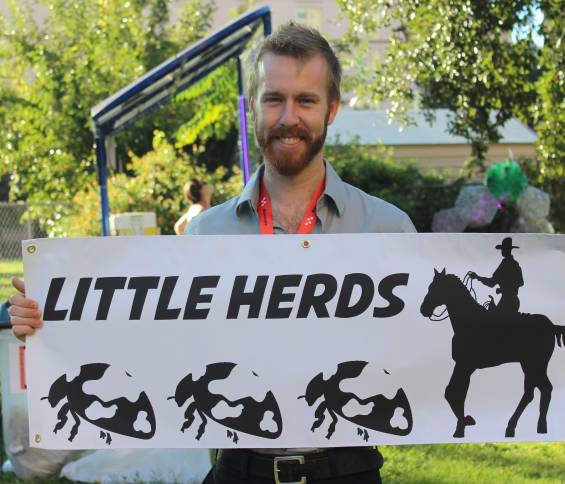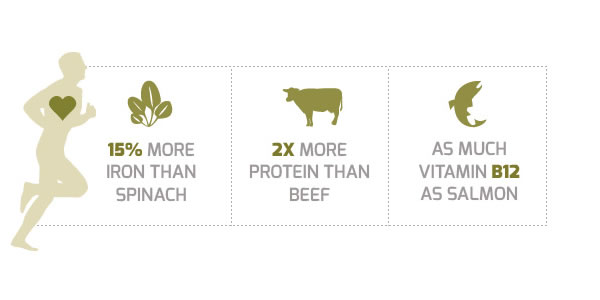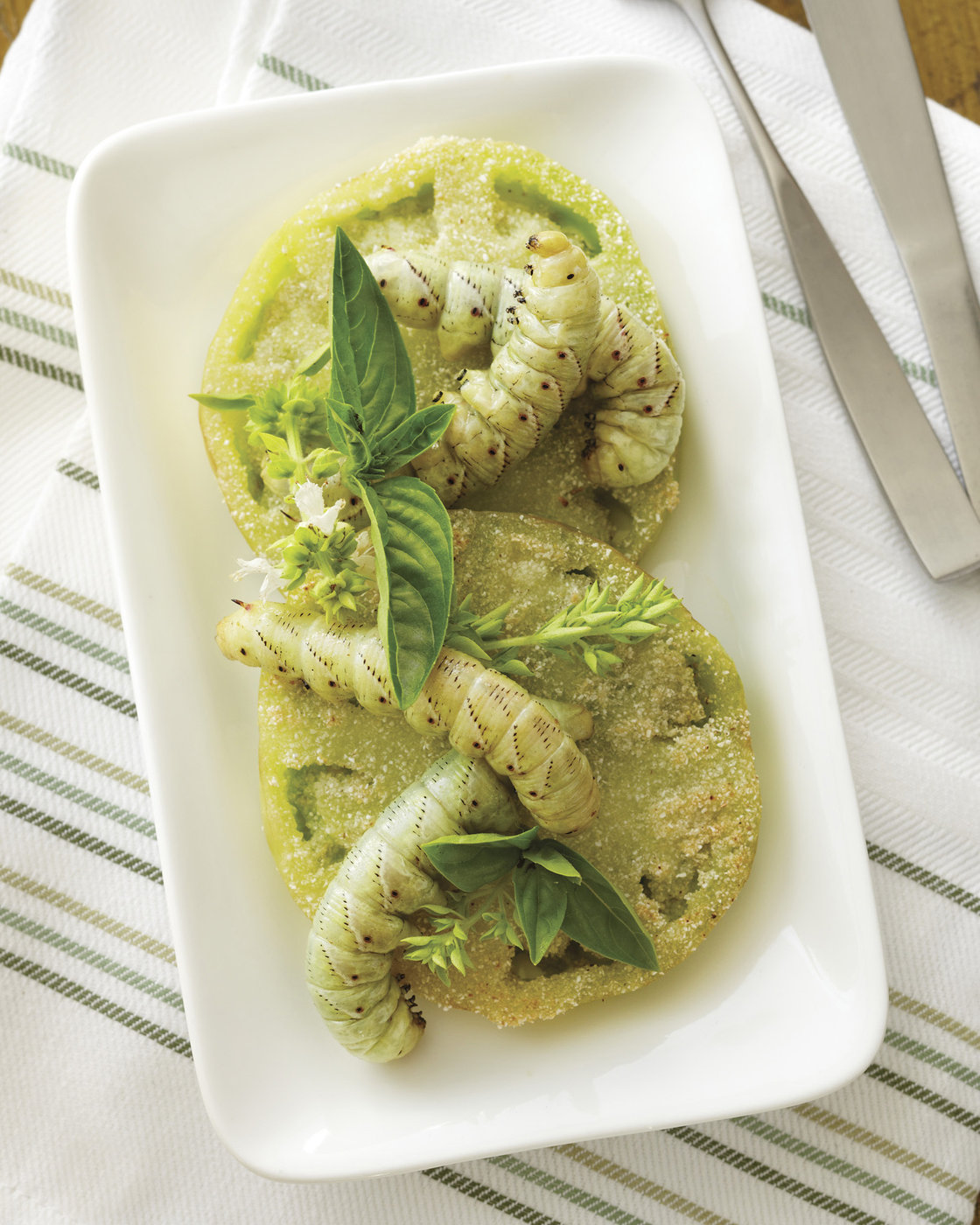How many crickets does it take to make a pound of flour?
Hard to say, says Robert Nathan Allen, founder of the nonprofit Little Herds in Austin, an organization devoted to educating us on why we should all be eating insects. “About five pounds of crickets makes a pound of high protein flour,” he told us by phone this week.
Allen reached out to me after reading last week’s post on eating bugs. “Great article on edible insects,” he wrote via email.
But unlike many of us who live in the United States, Allen doesn’t view entomophagy–that is, the consumption of insects as food–as an attention-getting gimmick or weird antic. He believes devoutly that we should join the two billion people worldwide who regularly eat crickets, caterpillars, tarantulas and a variety of larvae. His start-up nonprofit, Little Herds, claims status as North America’s first charity dedicated to promoting the eating of insects. The name salutes the small, ubiquitous creatures the organization suggests we consume as food. It also tips a hat to children, seen as the target market most likely to embrace the message.
Along those lines, Little Herds in Austin has partnered with Alimentary Initiatives of Toronto, Canada, to host their third Future Food Salon event, February 19, 7 – 11 PM at Vuka in Austin.

Robert Nathan Allen, founder of Little Herds, an Austin nonprofit organization devoted to the promotion of entomophagy, the eating of insects as food. Courtesy photo
The “unforgettable party” will feature local chefs, bakers, musicians, and artists who will deliver an evening of edible insects. Tickets are $40 and available online. Hope to see you there.
Allen makes a convincing case why eating bugs is good for our health and the health of the planet. He cites their high protein, low-fat, low carb constitution. Their production results in fewer greenhouse gas emissions, and insects often eat the detritus and trash we cast away–“the hops and grains that brewers toss, for example,” says Allen. “Bugs are so efficient in converting that waste to protein…it can close a lot of loopholes in the ecosystem” he says.
“Take cricket flour,” says Allen. “More than 50% of its dry weight is a complete protein, with no fat. It’s like a superfood powder. Add it to tortillas or chocolate chip cookies or banana bread and it makes the food more healthy.”
Allen has done just that at events like pot luck insect cook-outs, demos at SXSW Eco, East Austin Studio Tours and elsewhere. He believes “kids are the key” since they don’t have the hang-ups of their parents and think eating bugs is cool. “This is a way for us to teach the next generation of consumers,” he says.
An international studies graduate of the University of North Texas, Allen left college in 2009, moved to Austin and fell into the role as chief entomophagy promoter by chance. Upon graduation, he couldn’t find a job and worked as a bartender, then sales. One day his Mom sent him a video about entomophagy as a joke. “I thought it was really interesting and researched it online,” says Allen. “It shocked me that Austin didn’t have anybody doing anything with it.”

Why eat insects? Because they’re better–nutritionally and for the planet. Graphic via Chapul website, makers of cricket flour and high protein bars
As Allen grew more educated on the subject, he identified the need for a nonpartisan, noncompetitive voice to enlighten the public on the myriad reasons for eating bugs. He also realized that businesses need help in developing rules and standards for growing human consumption-grade insects. “And without chemicals or antibiotics,” he says.
“They should be held to a higher standard.” Little Herds was born.
Allen is staging a Little Herds fundraising campaign through StartSomeGood, a Kickstarter type website for raising money for good causes. His goal: $50,000. As of this writing, he’s raised $2,350. Feel free to chip in.
As for combatting the “ick factor” so many of us experience when faced with bugs IN our food, much less AS as an entree, Allen remains optimistic.
“I really don’t think it’s that big of a challenge,” he says. “Sushi took 20 years to go from dangerous and disgusting to commonplace. Lobster went from peasant prison food to a high class luxury. Most of the world doesn’t think it’s weird. Just us.”
More posts like this:
- Caterpillar Canapes, Anyone? Eating Bugs Could be Answer for a Hungry Planet
- Yo Soy Mariposista!
- Blue Morphos and a Butterfly Bonanza in Huatulco, Mexico
- Massive Mariposario in Yeé lo Bee to be Largest in Mexico
- Alamo, Texas: A great base for birds, bugs and butterflies
- Black Witch Moth: Large, Batlike and Harmless
- ON the Monarch Butterfly Trail in Michoacán, Mexico
- Founder of the Monarch Roosting Spot Lives a Quiet Life in Austin, Texas
Like what you’re reading? Don’t miss a single post from the Texas Butterfly Ranch. Sign up for email delivery, like us on Facebook, or follow us on Twitter, @monikam.


Please come by the Future Food Salon in Feb! World Ento will be providing all the insects for consumption and we’ll have tasty dishes for everyone
I’d definitely be down to do this! And I’d bring a camera. Just out of curiosity, is the shot of the fried green tomatoes and hornworms a joke – or is that really a preparation. They look alive to me. Thanks. Ken
Ken, why not hop JetBlue and come down and join us in Austin? Would be a good post for Garum Factory.
Hey Ken,
That’s the real deal. Many cultures around the world regularly consume edible insects, and have no qualms with the look of the whole insects. Not so much here, understandably. Many of our dishes we prepare use insect flour to bake all of the nutritional and environmental benefits without having to see them. It’s more approachable for the less extreme eaters 🙂